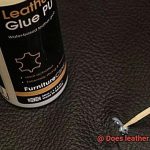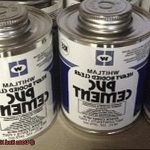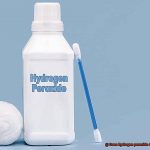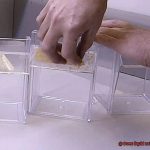Hot glue – the handy adhesive that sticks like a champ. Whether you’re crafting up a storm or fixing something on the fly, it’s become a go-to solution for many. But as we get more savvy about potential risks lurking in our everyday materials, one question keeps popping up: does hot glue leach into water? Could this seemingly innocent adhesive be secretly contaminating our aquatic havens?
In this blog post, we’re diving headfirst into this debate to bring you the truth. We’ll uncover the secrets of hot glue’s chemical makeup, explore its super-sticky properties, and get to the bottom of any potential health risks when it meets water. Armed with scientific research and insights from experts in the field, we aim to give you a comprehensive understanding of this sizzling topic.
So grab your goggles and join us on this journey through the world of hot glue and water. Together, we’ll determine whether this beloved adhesive is truly safe for all things aquatic.
What is Hot Glue?
Contents
Hot glue, also known as hot melt adhesive, is an incredibly versatile and widely used adhesive that has become a staple in crafts, DIY projects, and various industries. What sets hot glue apart is its ability to transform from a solid state to a molten liquid when exposed to heat, and then solidify again as it cools.
At the core of hot glue is a synthetic polymer called ethylene-vinyl acetate (EVA), derived from petroleum. This remarkable substance has a relatively low melting point, typically ranging from 176 to 194 degrees Fahrenheit (80 to 90 degrees Celsius), which makes it compatible with glue guns.
Using hot glue is as easy as 1-2-First, a cylindrical stick of solid adhesive is inserted into a glue gun. Next, the glue gun heats up the stick, causing it to melt into a liquid form. Finally, the melted glue is dispensed through a nozzle onto the desired surface, where it rapidly solidifies within mere seconds, forming a robust bond.
One of the most appealing aspects of hot glue is its versatility. It can adhere to an extensive array of materials including paper, fabric, wood, plastic, metal, and even certain types of ceramics. This wide compatibility makes hot glue an ideal choice for diverse applications like bonding crafts, repairing household items, and even assembling electronics.
Additionally, hot glue offers exceptional bond strength. Once cooled and hardened, it forms a powerful and long-lasting connection between surfaces. However, it’s important to note that the strength of the bond may vary depending on factors such as the materials being bonded and the application method employed.
Flexibility is another hallmark of hot glue. The hardened adhesive retains some degree of flexibility, allowing for slight movements or expansions without compromising the bond’s integrity. This quality proves especially advantageous in applications where flexibility is desired or required, such as fabric or leather crafts.
While hot glue boasts numerous advantages, it is crucial to handle it with care. The glue gun itself can reach high temperatures, posing the risk of burns if not handled properly. Moreover, direct contact with the molten glue can cause skin burns. To safeguard against these hazards, it is recommended to wear protective gloves and work in a well-ventilated area when using hot glue.
Does Hot Glue Leach Into Water?
Hot glue is composed of thermoplastic polymers that melt when heated and solidify upon cooling, making it versatile for a multitude of applications. When submerged in water, there is a possibility that some of its components may indeed leach into the liquid. This occurs due to the disparity in temperature between the glue and the water, causing the adhesive to soften and release chemicals.
The primary concern surrounding hot glue leaching into water revolves around the safety of these chemicals for human consumption and their potential environmental impact. Hot glue typically consists of synthetic resin, wax, and various additives. While these components are generally considered safe for use in various applications, their behavior when exposed to water warrants closer examination.
To investigate whether hot glue leaches into water, laboratory testing is conducted by immersing hot glue samples in water for a specific duration and subsequently analyzing the water for any traces of released chemicals. This method provides valuable insights into the behavior of hot glue in contact with water.
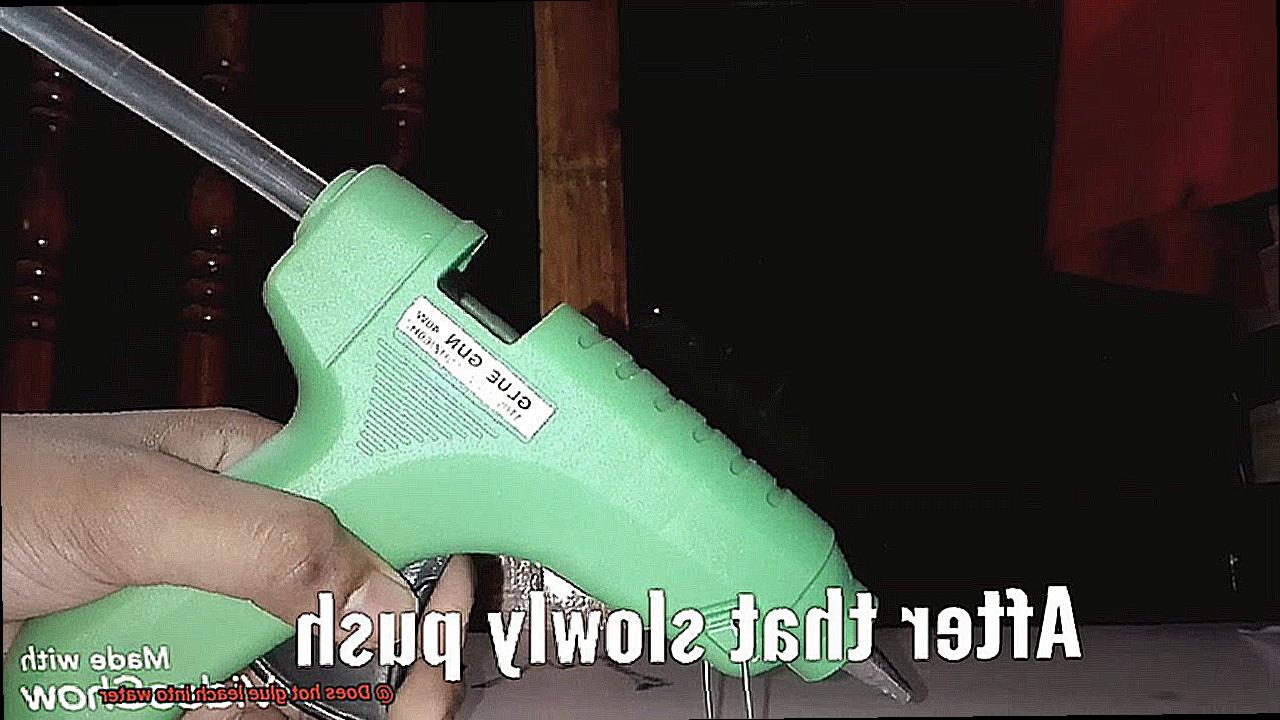
It is crucial to note that hot glue is designed to be used at high temperatures, typically around 195°C (380°F). At this elevated temperature, as long as the glue remains solid, significant leaching is unlikely to occur. However, if hot glue comes into contact with boiling or extremely hot water, the adhesive may soften more rapidly, heightening the potential for chemical release.
To ensure the safety of drinking water or any other water source, it is advisable to avoid using hot glue in situations where it may directly interact with water. If hot glue must be used in projects involving water, sealing or coating the glued area can help prevent potential leaching.
The Composition of Hot Glue
Hot glue, also known as hot melt adhesive, is a versatile and widely used adhesive that is melted and applied in a liquid form. Its composition consists of a combination of key components that contribute to its unique adhesive properties and melting characteristics.
At the core of hot glue is a thermoplastic polymer, typically based on ethylene-vinyl acetate (EVA) or polyamide. These polymers have low melting points, allowing them to easily melt when heated and quickly solidify upon cooling. The choice of polymer can vary depending on the desired strength, flexibility, and temperature resistance of the glue.
In addition to the polymer, hot glue contains tackifiers as additives. Tackifiers are resins or waxes that enhance the adhesion of the glue to different surfaces, ensuring a strong bond.
To increase flexibility and reduce brittleness after solidification, plasticizers are added in small amounts. These additives improve the elongation and flexibility of the glue, making it more versatile for various applications.
Heat stabilizers are sometimes included in the formulation to lower the melting point of the glue and facilitate its application. These additives prevent the glue from degrading or losing its adhesive properties when exposed to high temperatures during the melting process.
Hot glue may also contain colorants to give it a specific color. These colorants are typically non-toxic and do not affect the adhesive properties of the glue.
It is important to note that while hot glue is generally safe for use in dry or low-moisture environments, it is not designed for direct contact with water. Prolonged exposure to water can cause the glue to soften or weaken over time, resulting in reduced adhesion or failure of the bond. For applications requiring water resistance, specialized waterproof adhesives should be used.
Why Hot Glue Does Not Leach Into Water
Thankfully, hot glue does not leach into water, and here’s why:
- Composition of hot glue: Hot glue is composed of thermoplastic polymers, tackifiers, plasticizers, and heat stabilizers. These components work together to create a strong adhesive that bonds materials effectively.
- Non-soluble nature: The thermoplastic polymers in hot glue are not soluble in water. Unlike some other adhesives that dissolve or break down when exposed to water, the solid form of hot glue retains its structure in water and does not release any harmful substances.
- Strong bond resistant to moisture: When hot glue is heated, it becomes soft and malleable, allowing it to adhere to surfaces. However, once it cools down and solidifies, it forms a strong bond that is resistant to moisture. This makes it an excellent choice for projects that involve water.
- Relatively low melting point: Hot glue has a relatively low melting point of 120-150 degrees Celsius (248-302 degrees Fahrenheit). This means that unless the water reaches extremely high temperatures, such as boiling, it will not be hot enough to melt the glue and cause it to leach into the water.
- Safety in water: Hot glue is made from non-toxic ingredients such as ethylene-vinyl acetate (EVA), resin, and wax. These components are considered safe for general use and do not pose significant health risks when used as directed.
While hot glue itself may be safe in water, it is essential to consider the overall composition of your project. Other additives or substances used in conjunction with hot glue may not be suitable for aquatic environments. Therefore, it is crucial to ensure that all materials used in your project are water-friendly.
Potential Issues with Submersion
Submerging hot glue in water can have several potential issues that should be taken into consideration. Firstly, prolonged exposure to water can cause the hot glue to degrade. Over time, the glue may soften and lose its adhesive properties, resulting in weakened or broken bonds. It is important to note that not all hot glues are created equal, and while some may be more resistant to water than others, it is generally not recommended to submerge any hot glue in water for extended periods.
Another concern when submerging hot glue is the leaching of chemicals into the water. Hot glues are typically made from a combination of synthetic polymers, additives, and other substances. When these chemicals come into contact with water, they may dissolve and contaminate the water. Some common additives found in hot glue include plasticizers, antioxidants, and stabilizers, which are not intended for consumption or contact with the skin. Ingesting or absorbing these chemicals can pose potential health risks.
Temperature changes can also impact hot glue when submerged in water. Hot glue is designed to melt at high temperatures and solidify quickly upon cooling. However, exposure to water, especially cold water, can cause rapid temperature changes that lead to the hot glue contracting and expanding. These changes can potentially result in cracks or breakage.
It is crucial to consider the specific application and materials involved when deciding whether to submerge hot glue in water. While hot glue may offer a temporary solution for sealing a leaking pipe joint, it is not a long-term fix as prolonged exposure to water can compromise the bond’s integrity.
Prevention and Safety Tips for Water-Related Projects
Choose the Right Glue:
When working on water-related projects, it’s important to select a glue that is specifically designed for such applications. Look for glues labeled as waterproof or water-resistant. These types of glues are formulated to withstand exposure to moisture and prevent leaching into the water.
Read the Product Instructions:
Before using any glue, make sure to carefully read and follow the instructions provided by the manufacturer. This will give you important information about the recommended application methods, curing time, and any specific safety precautions that need to be taken.
Ensure Proper Ventilation:
When working with any type of glue, ensure proper ventilation in the workspace. This helps to minimize exposure to potentially harmful fumes and ensures the safety of the individuals involved in the project. Open windows or use fans to improve air circulation, especially when working with glues that emit strong odors.
Wear Protective Gear:
To protect yourself from any potential hazards associated with glue usage, it is advisable to wear appropriate protective gear. This may include gloves, safety goggles, and a mask if necessary. Gloves help prevent skin contact with adhesives, while safety goggles protect the eyes from accidental splashes or drips.
Work in a Clean and Organized Area:
Maintaining a clean and organized workspace is crucial for performing water-related projects safely. Clear away any clutter or debris that could potentially cause accidents or interfere with the adhesive bonding process. Keeping your work area tidy also reduces the risk of contamination from other substances that may affect adhesive performance.
Allow Sufficient Drying Time:
After applying glue to your project, allow sufficient drying or curing time before exposing it to water. Follow the manufacturer’s recommendations regarding drying times to ensure a strong and durable bond. Rushing this process can lead to weak adhesion and potential leaching of the glue into water.
Test the Bond Before Full Immersion:
Before fully submerging your project in water, conduct a small-scale test to ensure the adhesive bond is strong enough. Apply the glue to a small area and allow it to dry according to the instructions. Then, subject it to similar conditions as the final project will experience, such as water temperature and pressure. This will help you determine if any adjustments or additional reinforcement are needed before proceeding with the full project.
Conclusion
In conclusion, we have thoroughly explored the question of whether hot glue leaches into water in this article. Hot glue, also known as hot melt adhesive, is a versatile adhesive made up of thermoplastic polymers, tackifiers, plasticizers, and heat stabilizers. These components work together to create a robust bond that can withstand moisture.
While hot glue itself does not leach into water, there are important factors to consider when submerging it. Prolonged exposure to water can cause the glue to degrade and lose its adhesive properties over time. Furthermore, the chemicals used in hot glue may dissolve and contaminate the water upon contact.
To avoid any potential issues or risks when working on water-related projects, it is crucial to select the appropriate type of glue specifically designed for such applications. Waterproof or water-resistant glues are formulated to endure exposure to moisture without leaching into the water. It is also essential to carefully read and follow the product instructions provided by the manufacturer, ensure proper ventilation in your workspace, wear protective gear, work in a clean and organized area, allow sufficient drying time before exposing your project to water, and conduct small-scale tests before fully immersing your creation.
By adhering to these prevention and safety tips, you can confidently utilize hot glue in your water-related projects while minimizing any potential concerns or risks.



